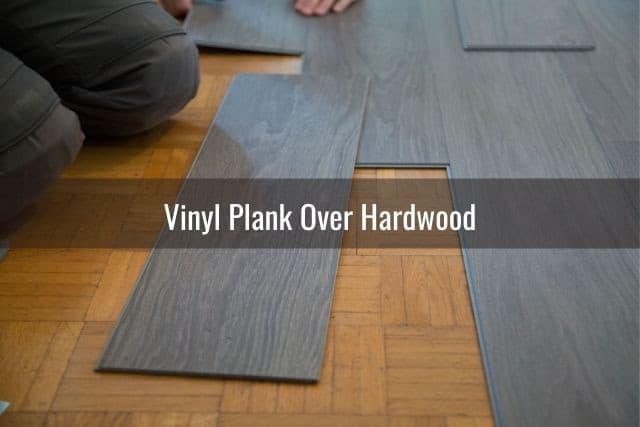Imagine this: you’ve just finished laying down beautiful, modern vinyl plank flooring throughout your home, transforming the space into a haven of style and comfort. But then, the question arises – can you place your treasured piano on this new, pristine surface? The weight of a grand piano, a symbol of musical artistry, can make you pause and wonder about the potential impact on your flooring.

Image: www.pinterest.de
This is a common concern for many homeowners. The allure of vinyl plank flooring, with its durability, affordability, and aesthetic versatility, is undeniable. However, the fear of damaging this flooring by placing a heavy piano on it can be a deterrent. So, let’s delve into the nuances of this situation, exploring the compatibility between pianos and vinyl plank flooring and providing you with the knowledge to make an informed decision.
Understanding Vinyl Plank Flooring and Piano Weight
Vinyl plank flooring, a popular choice for modern interiors, mimics the look and feel of real wood, offering a cost-effective and stylish alternative. It’s known for its durability, resistance to moisture, and relative ease of installation. However, each plank has a load-bearing capacity, which is the amount of weight it can withstand without buckling or cracking.
On the other hand, a piano, especially a grand piano, is a heavy piece of furniture. The weight can vary substantially depending on the size and make of the piano. A typical upright piano can weigh around 300-500 pounds, while grand pianos can exceed 1,000 pounds. The weight distribution isn’t uniform either, with the bulk of the weight concentrated in the cast iron frame and the soundboard.
Factors Affecting Piano Placement on Vinyl Plank Flooring
While the idea of placing a piano on vinyl plank flooring might seem daunting, it’s not necessarily impossible. Several factors influence whether it’s a good idea or not:
1. Plywood Subfloor Quality:
The foundation for any flooring, including vinyl plank flooring, is the subfloor. The quality of the plywood subfloor plays a critical role in determining its load-bearing capacity. A subfloor made of strong plywood sheets, properly installed and leveled, can support heavier items like a piano.

Image: mromavolley.com
2. Type of Vinyl Plank Flooring:
Not all vinyl plank flooring is created equal. Some manufacturers offer thicker, denser planks with higher load-bearing capacities. These are often marketed as “commercial-grade” or “heavy-duty” vinyl flooring. Consult the flooring manufacturer’s specifications or inquire with your retailer for information on the specific plank’s load-bearing capacity.
3. Piano Placement:
Strategically placing the piano on the vinyl plank flooring is essential. It’s best to avoid placing it in high-traffic areas to minimize the chance of foot traffic directly on the flooring beneath the piano. Placing it against a wall also adds a degree of stability and reduces strain on the flooring.
4. Number of Support Legs:
Pianos typically have multiple legs, which distribute the weight over a larger area. The more legs the piano has, and the wider they are spaced apart, the better its weight is dispersed, reducing pressure on any one section of the flooring.
Alternatives to Direct Piano Placement
If you’re hesitant about placing the piano directly on your vinyl plank flooring, there are alternative solutions:
a) Piano Wheels or Casters:
Consider equipping your piano with wheels or casters to facilitate its movement and minimize pressure on the flooring. However, ensure that these wheels or casters are durable enough to support the piano’s weight without compromising their stability.
b) Floor Underlayment:
Adding a layer of underlayment beneath the vinyl planks can further enhance their load-bearing capacity and provide additional cushioning. The underlayment should be specifically designed for high-load areas and be compatible with your chosen vinyl plank flooring.
c) Concrete Slab Subfloor:
If you’re in the construction phase of your home or planning a renovation, consider a concrete slab subfloor. Concrete slabs are known for their superior load-bearing capacity and can easily accommodate heavy items like pianos.
Preventing Damage and Maintenance
Even with a solid subfloor and careful placement, some preventive measures can safeguard your vinyl plank flooring:
a) Protective Pads:
Place protective pads or felt pads under the piano’s legs to minimize direct contact with the floor, preventing scratches and indentations. These pads should be specifically designed for a heavy piano and have high friction to prevent slippage.
b) Regular Inspection:
Periodically inspect the flooring beneath the piano. Look for any signs of wear, cracks, or indentations. Address any issues promptly to prevent further damage.
c) Avoid Heavy Foot Traffic near the Piano:
Encourage family members and guests to avoid placing heavy foot traffic directly in front of or behind the piano, especially if the flooring underneath is showing signs of strain.
d) Professional Consultation:
If you have any uncertainties or doubts about the suitability of your flooring and the piano’s weight, consult a professional floor installer or a qualified engineer for guidance. They can provide expert advice tailored to your specific situation.
Can You Put A Piano On Vinyl Plank Flooring
https://youtube.com/watch?v=QrbuFStmNfk
Conclusion
While placing a piano on vinyl plank flooring may raise concerns, it’s not always a no-go. By considering the load-bearing capacity of your flooring, the piano’s weight distribution, and using preventive measures like protective pads and regular inspection, you can ensure that your flooring can handle the weight of your musical instrument while maintaining its beauty and longevity.
Remember, if in doubt, it’s always wise to err on the side of caution and consult with professionals to determine the best course of action for your unique situation. Enjoy your musical journey with a piano that sits securely and gracefully on your vinyl plank flooring.





